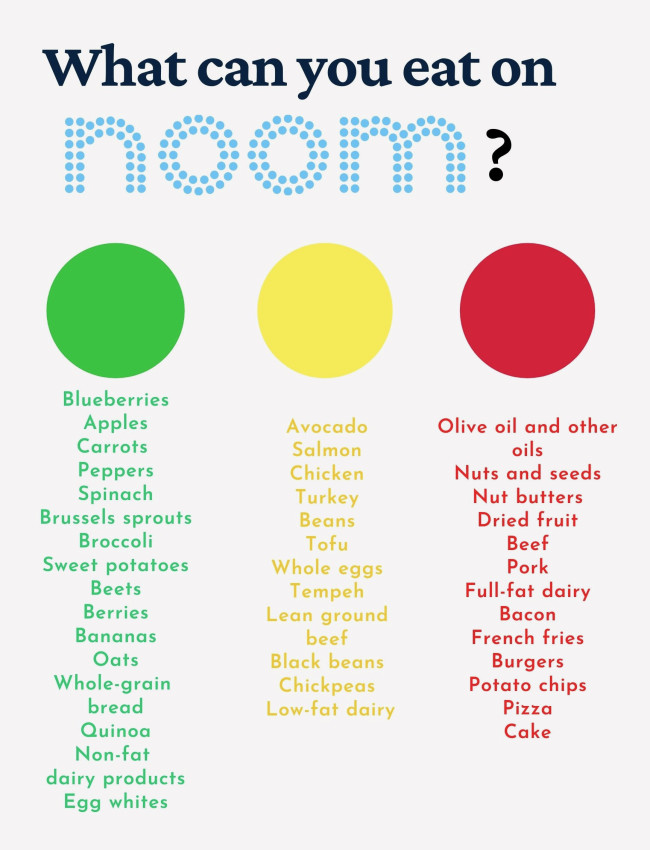Is Noom Really All That Different From Other Diets? Here’s What the Experts Say
When Jennifer Teplicki, 34, downloaded Noom, the first weight loss app she’s ever tried, a notification popped up on its carrot-colored user interface. It asked her to choose her sex, height, current weight, goal weight, and whether she wants to lose weight rabbit-style (as quickly as possible) or at turtle-speed (slowly but surely).
After she clicked on the rabbit, the app asked if any recent life events led to her weight gain (she chalked up the extra pounds to “stress and mental health”). A series of questions also asked whether she cooks or dines out more (she chose, “home cooking”), and how motivated she felt to start the weight loss process (she answered, “I’m ready”). Once Noom set her daily calorie intake to 1,200 calories — the minimum budget allowed for females —Teplicki diligently recorded every meal she ate in the app’s food tracking feature and chatted with a virtual nutrition coach every week. From January to August 2020, Teplicki lost 85 pounds.
What Is Noom?
Teplicki is not alone in her journey. Since its launch in 2016, the Noom app has been downloaded 50 million times. In 2021, the company’s revenue ballooned to $237 million — quadrupling from $12 million in 2017. Artem Petakov, the app’s president and co-founder, was even included in Fortune magazine’s 40 Under 40 lineup in 2020.
While weight loss apps aren’t new, Noom bills itself as a lifestyle changing program — not just a diet. Its website bills it as the “last weight-loss program you’ll ever need.” The app incorporates a cognitive-behavioral therapy (CBT) approach to weight-loss, a psychological method focused on recognizing self-defeating thoughts and behaviors and replacing them with healthy coping strategies.
Noom calculates a daily recommended caloric intake for each user based on the data they provide. The app includes an interactive diary for users to track their weight, monitor daily eating habits, and chat with nutrition coaches (real people but not registered dietitians). For dieters looking for moral support, Noom offers access to a community of other “Noomers” through the app. It has also inspired countless online communities, including the “Noom Working Moms” and “NoomNerds” Facebook groups. Downloading Noom is free, but its monthly subscription plan costs $59.99, making it a tad pricier than the Weight Watchers app, its main competitor.
Dishing up Support
Crystalinda Buebe, 30, says the app helped her become more aware and mindful of her eating habits, especially the daily CBT-based articles and quizzes essential to Noom. Before starting Noom, Buebe suffered from disordered eating for years, where her daily caloric intake fluctuated from 6,000 calories on binge eating days to 600 on restrictive days.
“Noom articles often reference ‘the elephant and the rider,’” says Buebe. The latter is the rational side of our brains, and the former is the emotional one. The app gives you different tips on how to better manage the ‘elephant’ that tells you you’re not good enough and prevents your weight-loss.”
Daily weigh-ins and food logging were the most challenging parts about Noom, Buebe says. Noom categorizes the users’ meal logs into a color system — green, yellow, and red — based on their calorie density and concentration of nutrients. Green-lighted foods like broccoli are the least calorie-dense and highest in nutrients. Red foods, such as fatty fish and deserts, are either calorie-heavy or less nutritious. Lean meats and low-fat dairy are filed under the yellow zone, and they should be eaten in moderation.

(Credit: Anamaria Silic for Discover)
According to Noom, no food is off-limits, but some experts have expressed concerns about its traffic light classification. Bonnie Taub-Dix, a nutritionist, creator of BetterThanDieting.com, and author of Read It Before You Eat It: Taking You from Label to Table says that Noom’s labeling of healthy foods like salmon, dry fruits and nuts as red, gives dieters the wrong impression that they shouldn’t eat them at all.
“Almonds are an excellent source of biotin, vitamin E and magnesium,” Taub-Dix says. “I don’t think they should go on this list, but it seems that Noom is following the old principle [that] fats are not good for you.”
Abbey Sharp, a registered dietitian and YouTuber at Abbey’s Kitchen, says Noom is no different than any other calorie-driven diet. “[The app’s] approach to psychology is just a few token tips, but the crux of this diet is solely based on restricting food categories,” Sharp says.
However, Teplicki sees the color-coding system as more of a recommendation. “Some days you feed the body and some days you feed the soul,” Teplicki says. “I’m from New York City and a pizza night every week is sacred to me, I’m having it no matter what. But I use Noom to calculate how it fits into my daily calorie intake, so I don’t end up overeating.”
The key to weight loss, however, is not in any particular diet, says Taub-Dix. Rather, it’s about investing time into building a sustainable nutrition plan that works for your personality and lifestyle. What you want to avoid is being a “hummingbird dieter” — someone who switches from one dieting fad to another and gives up too easily.
“The word ‘diet’ means a way of life, not a weight of life. The crucial part is learning how to value and take care of yourself long-term. Eating well and nourishing not just your body but your mind too, helps you live a better life, physically and emotionally,” she says.
